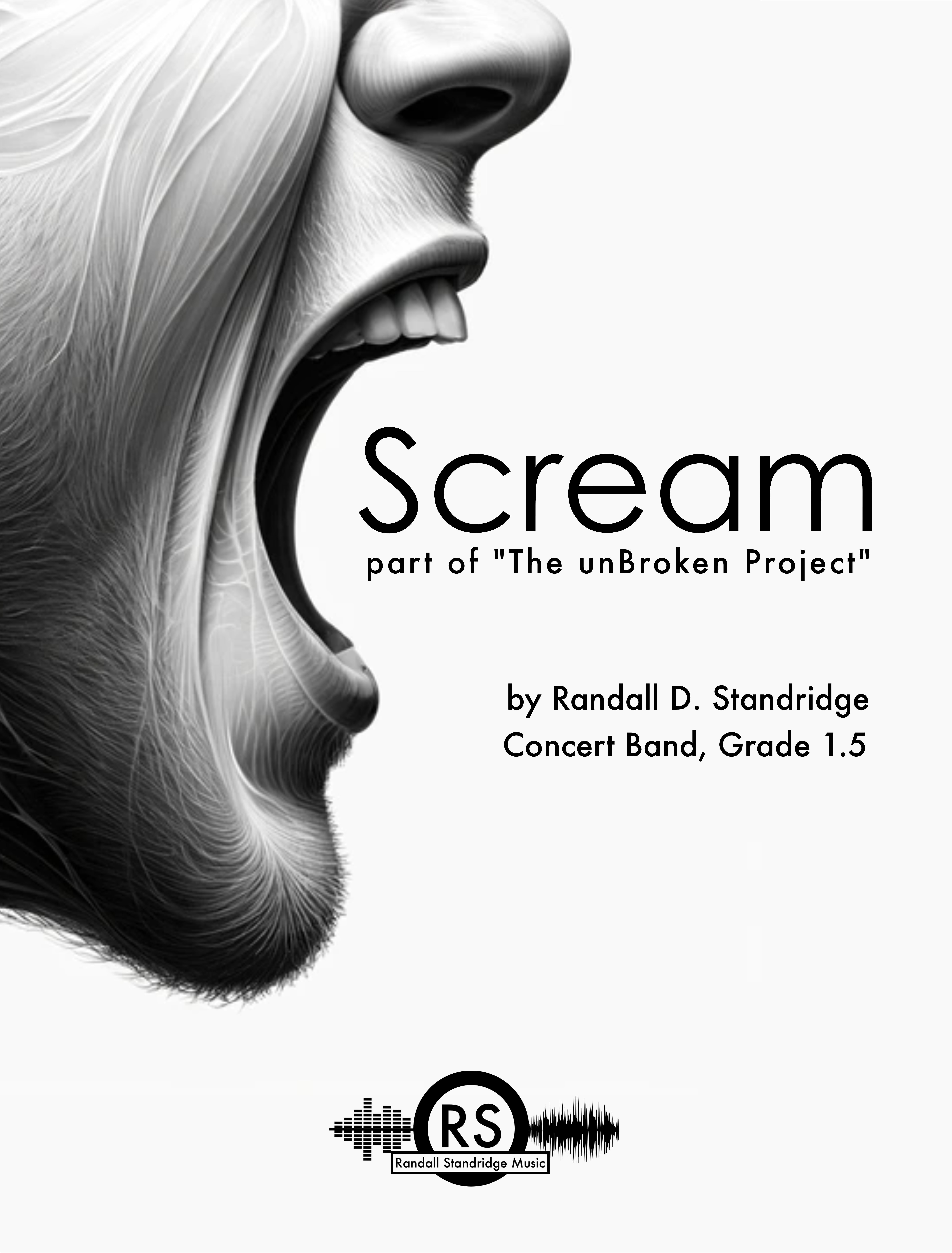Scream
Scream - Randall Standridge
Why should I scream?
We all experience negative emotions. The question is, what do we do with them? Do we bottle them up? Do we pretend they aren’t there? Do we allow them to consume us and color how we interact with others?
We can. We can do all of those things.
Or…
We can rechannel that negative energy into action!
We can pour it into an intense workout. We can let it fuel our creative output.
And we can scream.
Scream it out until it is used up like a tank of gas or a dead battery.
So, do this with me. Breathe in and put all of that negative energy into your lungs. Picture them inhabiting that space like phantoms.
Now scream.
Scream, scream, SCREAM them out to the night sky.
Peace, Love, and Music.
About the work
Scream is a bombastic work for concert band that utilizes three main components to create its soundscape: a 12-tone row (provided below), an octatonic scale (created by alternating whole and half steps), and the sounds of screaming (both from our human performers and from a nifty little instrument with the best name ever: The Aztec Death Whistle, available on Amazon!). The three elements combine to make a highly dissonant, energetic piece of music whose main purpose is to channel the negative emotions of the performers into something exciting for themselves and the audience.
12-Tone and Octatonic Scales
12-tone music has always sounded disturbing and inhuman to me, and I found this to be a great way to express mental illness and despair. The 12-tone row is built off of various iterations and inversions of the second theme (“Mental Illness Motif”). The Octatonic scale is built by alternating half and whole steps. Scream uses the first five notes in this pattern quite often.
